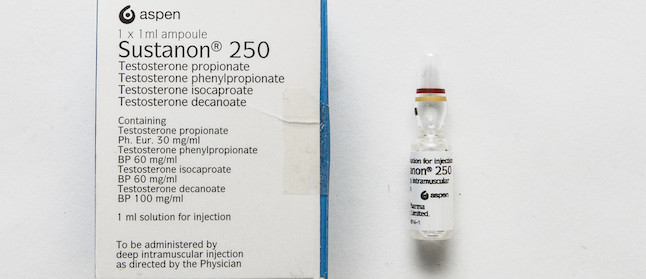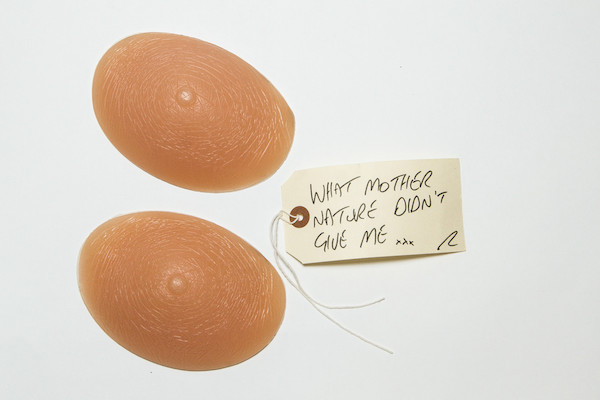
As Brighton prepares for Pride festivities in early August, the city is also due to celebrate its longstanding commitment to supporting the acceptance and equality of the transgender community. The Museum of Transology is a new exhibition at the Brighton Museum displaying 150 items crowdsourced from around the country, making it the single largest collection of trans objects in the UK. It’s aim is to carve out a space to celebrate the transgender experience in all its joy, pain and diversity, within the walls of one of the city’s most prestigious cultural institutions.
The Museum of Transology, now on display in Brighton Museum’s Spotlight Gallery, is an installation that has been many years in the making.
The Museum of Transology, now on display in Brighton Museum’s Spotlight Gallery, is an installation that has been many years in the making. The objects it contains have all meant something significant to the over 100 transgender people who submitted them; some are talismanic, others traumatic. Laid out in glass cabinets, on stands, hung up and projected on the walls, most of the objects are accompanied by a brown paper label with a written testimonial from the owner. The exhibition states that these objects represent ‘milestones of their owners’ gender journeys’, but their new context also makes them cultural touchstones. Together they express, with moving eloquence, the messy, eclectic, mundane reality of what it means to be trans.
The genesis of the exhibition lies with curator and fashion historian E-J Scott, who began collecting objects years ago from his own experience of transitioning. The array of items he has managed to save and immortalize here is extraordinary; a large glass cabinet in the centre of the exhibition holds virtually everything he kept from his chest surgery. The pale-blue patterned hospital gown, greenish anti-blood clot socks he had on in the operating theatre, the binder he wore after surgery, all alongside many, many boxes of testosterone. He even kept the removed breast tissue - preserved and displayed here in two matching jars of formaldehyde. ‘I’m a collector,’ he writes. ‘I save objects to trigger memories of special events.’
One of Scott’s aims for The Museum of Transology is to bring the transgender experience back to earth, reclaiming the stories of ordinary trans people and making their experiences less of a spectacle for others. The majority of the objects here - dolls, friendship bracelets, badges - are little tributes to the everyday, and mark a merciful departure from a borderline unhealthy fascination with all things trans that has been fermenting in certain corners of the media and advertising industries in recent years. Caitlin Jenner this is not, and the resolute cis-gaze of the mainstream media is duly chastised (BBC Radio 4’s Women’s Hour is highlighted in particular for repeatedly treating trans people with ‘incredulity’).

Besides the obvious, another benefit to this kind of approach is that it gives the exhibition an intimate, confessional quality that can sometimes catch the viewer off-guard. Eschewing the sequins and gloss with which the trans experience is all too often wrapped for mainstream consumption, an inconspicuous piece of paper or train ticket can take on a powerful symbolism from its submitter’s story alone. One section of wall is hung with a host of laminated letters from the NHS with diagnoses of gender dysphoria. These pieces of paper are crucial to allowing their owners to start to build a new gender identity, and hold the keys to changing passports and official documents. They’re not spectacular, but they are real.
One of the exhibits is a behind-the-scenes extract from the Channel 4 documentary Born Risky, presented by artist Grayson Perry and broadcast last year. In the clip, E-J Scott and Perry discuss gender identity - Scott from his perspective as a transgender man, and Perry as a cisgender transvestite. Scott explains how the ways in which we dress are fundamental to the construction of our identity. ‘The thought of wearing women’s clothes petrifies me,’ he says. ‘One of the single happiest days of my life was when I was able to wear a t-shirt after surgery.’ But he also acknowledges the curiously conservative interpretation of gender by some members of the trans community: ‘Am I part of the problem of perpetuating masculine stereotypes?’
To put it bluntly, The Museum of Transology is a celebration of the little things in life that can make a big difference. Making a home for the transgender community, a community still subject to great abuse and discrimination, in the Brighton Museum is in many ways to stake out a corner of history for the broad, sprawling spectrum of gender identity.
The Museum of Transology is on display at the Brighton Museum & Art Gallery until 3 June 2018.